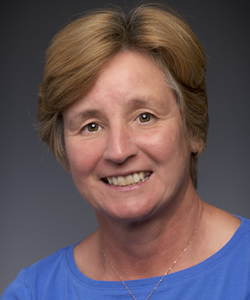Catholics are deeply entangled in the tremendous cultural and demographic changes currently underway in America. And their encounter with change is further layered by Pope Francis’s commitment to institutional and doctrinal renewal. Yet amid all this ferment, American Catholicism as a whole seems remarkably settled. Long-present tensions and cleavages continue to more or less follow their well-worn contours. Take the growing number of Hispanics in its ranks. Despite significant differences in the socioeconomic circumstances and political priorities of Hispanic and white Catholics, Hispanics tend to express much the same views as whites on hot-button issues such as same-sex marriage, divorce and remarriage, celibacy, and the Church hierarchy’s teaching authority. For both groups, loyalty to Catholicism and disagreement with official Church teachings on sexual morality go hand in hand.
And nor has the focus or tone of Catholic lay activism changed in any significant way. Rather, the multifaceted stream of post-Vatican II efforts to see the recrafting of a more inclusive Catholicism and a more lay-centered Church continues. This well-seasoned push for reform is on some issues energized by Francis, such as his attentiveness to the diversity of family realities, and on others given pause (for example, his reassertion of the settled nature of women’s exclusion from ordination). Francis’s naming of the problem of clericalism in the Church has been widely welcomed, but there appear to be few steps taken to actually start changing this culture, itself in any case a long-term project and one hard to envision, given the deep-seated male bias in Church structures and practices. Moreover, beyond Church reform itself, Francis’s concern with large-scale societal problems such as economic inequality and climate change seems to have a negligible “effect” at best on Catholics (and others), despite wishful thinking by some Catholic and secular advocates.
More remarkable perhaps, the American Church hierarchy, embodied in the United States Conference of Catholic Bishops, seems to be mostly stalling in response to Francis’s exhortation to rebalance the Church’s priorities. In particular, the bishops’ ongoing prioritization of religious freedom and their execution of their public campaign strikes a more defensive posture than that of a Church committed to renewal. While the defensiveness may be understood as a product of the bishops’ collective dismay in the face of their inability to stem accelerating secular currents, it further undermines their ability to encounter Catholics, and others too, where they are. This, in turn, likely contributes to a further distancing of Catholics from the Church, if not their exit. Despite the fact that many Catholics leave, loyalty to Catholicism is also relatively resilient and is nurtured by the many strands in Catholic doctrine that allow Catholics to dissent or to protest from within the Church rather than to break with it.
This dynamic may be tested by current generational pressures. Young Americans are the most secular generation, with four in 10 expressing no religious affiliation. And among Catholics, young adults take for granted the normality of both same-sex relationships and cohabiting (without marriage). They and their non-Catholic peers are also highly concerned about the problem of global warming. For a Church that seeks relevance and renewal, therefore–as first noted by Pope Benedict XVI, and amplified by Francis—it seems important for the bishops to proactively and non-defensively dialogue with young Catholics especially, but with others too. Evangelization requires such a turn. And preparation for the upcoming Synod on Youth provides an opening to start afresh.
Not all American bishops, of course, think alike. And some stand out for their efforts to steer the Church in ways that are attentive to current Catholic and secular realities. Yet, during the recent Synod on the Family, perhaps the most significant opportunity for doctrinal and pastoral reform since Vatican II, it was the German bishops who, despite their own doctrinal disagreements, led the way toward a more inclusive Church, through realizing the possibility of communion for divorced and civilly remarried Catholics. Global Catholicism needs all of its many regionally diverse voices. American Catholicism has managed better than its Western counterparts to maintain commitment to the Church while integrating secular currents into what it means to be Catholic. This is a resource that worldwide Catholicism can well use as it engages with the complex realities of the twenty-first century. In this context, the expanding participation of American Catholics in global dialogues about justice and social inclusion can help deepen the relevance of global public Catholicism, even as we recognize specifically American cultural influences on American Catholics’ sensibilities.
EDITOR'S NOTE: The opinions expressed are the author’s own and do not necessarily reflect the views of the University of New Hampshire.

